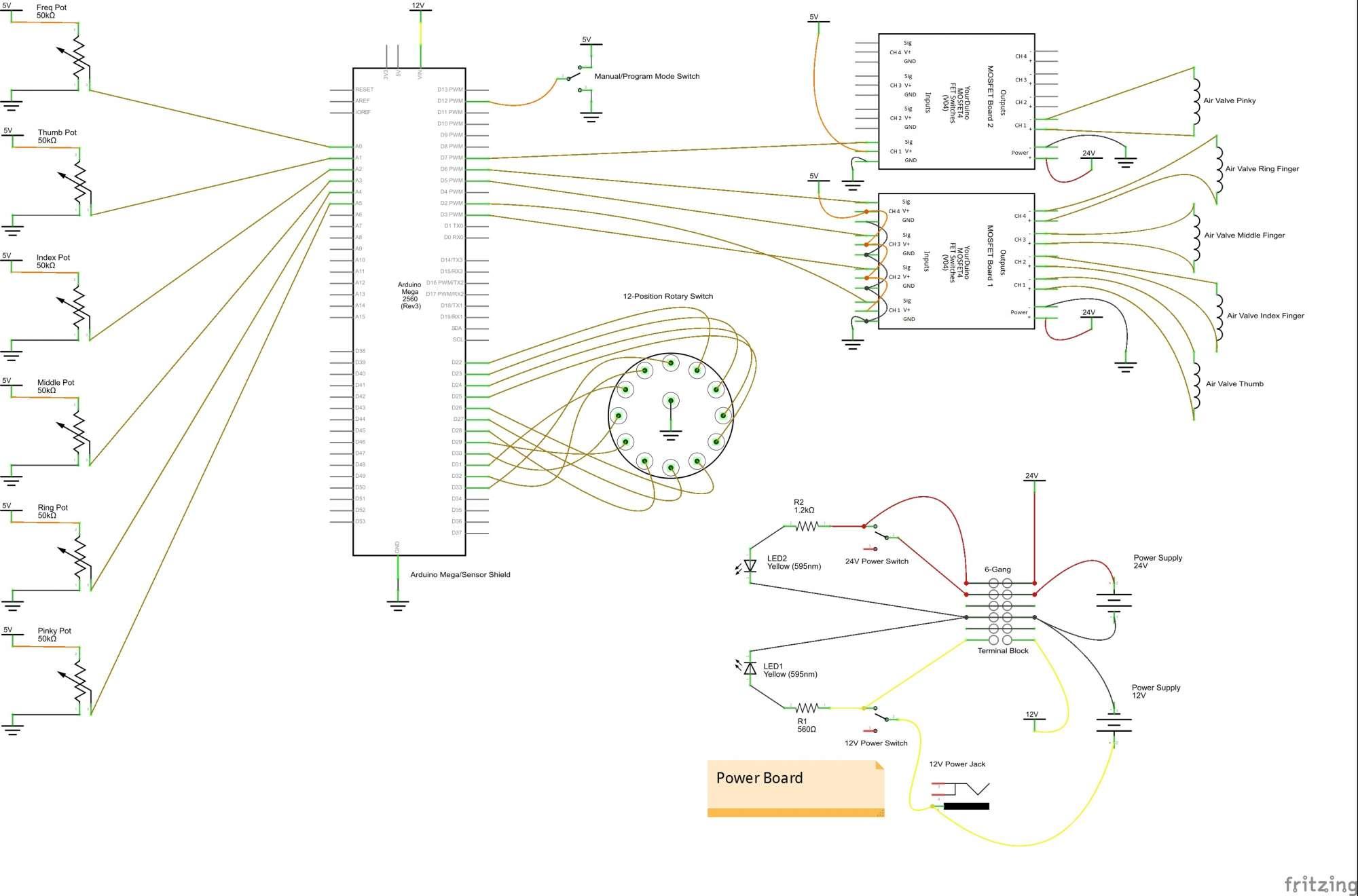Control Board Fabrication
Detailed steps to fabricate the control board are below, but can also be found on the Popular Science website.
This is a complex project. Since your control board is a considerable investment in time and money, consider future expansion as you plan your build. For example, you may wish to buy an 8-port manifold and appropriate valves and fittings, so you can expand the board to control more actuators than then five you need for the robot hand project.
You can download the schematic below from the link at the bottom of the page. Clicking on the image below will also load the image in your browser, and you can save it locally from there.
Materials
- Air compressor with regulator
- 1/4-inch Sintra PVC board (12-inch x 24-inch)
- 24V 15A DC power supply
- 12V 1A DC Power Supply with size “M” 2.1-mm x 5.5-mm coax connector
- Panel-mount coax power jack, size “M” 2.1-mm x 5.5-mm
- Coax power plug, size “M” 2.1-mm x 5.5-mm
- Arduino Mega 2560 or compatible
- Sensor Shield for Arduino Mega V2 (with cables)
- Two YourDuino Power FET switch boards
- Five SMC VQ110U-5M-M5 air valves (or similar: 24VDC, connector with lead wires)
- One SMC VV3Q11-05 5-port manifold (or similar)
- Six SMC KQ2L07-M5 elbow fittings
- 1/4-inch outer diameter vinyl tubing
- Six 50-kilohm potentiometers (“pots”)
- Seven 6-mm shaft potentiometer knobs
- 22 gauge stranded or pre-bonded wire (black, red, and yellow)
- 24 gauge multi-conductor cable or ribbon cable (13 conductors needed)
- 6-gang terminal block
- Three single pole double throw toggle switches
- Two 5-mm yellow LEDs
- Two 5-mm LED mounts
- 560-ohm resistor
- 1.2-kilohm resistor
- Twelve M 3-mm x 6-mm Phillips plastic PCB board fasteners
- Twelve 21-mm x 6-mm PC board spacers
- Five 1/4-inch 2-inch hex bolts
- Ten 1/4-inch hex nuts
- Two 10-32 1-inch bolts
- Double sided foam tape
- Shrink tubing
- Wire zip ties (for cable management)
Tools
- Table saw
- Pencil
- Center punch
- Drill and drill bits (13/64", 17/64", others sizes based on component dimensions)
- Metric tap M 3-mm x 0.5-mm, standard 10-32-inch tap (other sizes based on component dimensions)
- Soldering iron and solder
- Wire stripper
- Flathead and Phillips screwdrivers
- Adjustable wrench
- Lighter (for shrink tubing)
Assembly
- Lay out the control board. You can base your design on the photos, but adjust it to suit your own needs. It is convenient to have the power and controls near the edges where you can reach them. It is also convenient to have the Arduino Mega/Sensor Shield between the controls and the MOSFET power switches. The MOSFET modules should be close to the air valves/manifold. Power supplies can be placed wherever you like, but consider how power will be routed around the board.
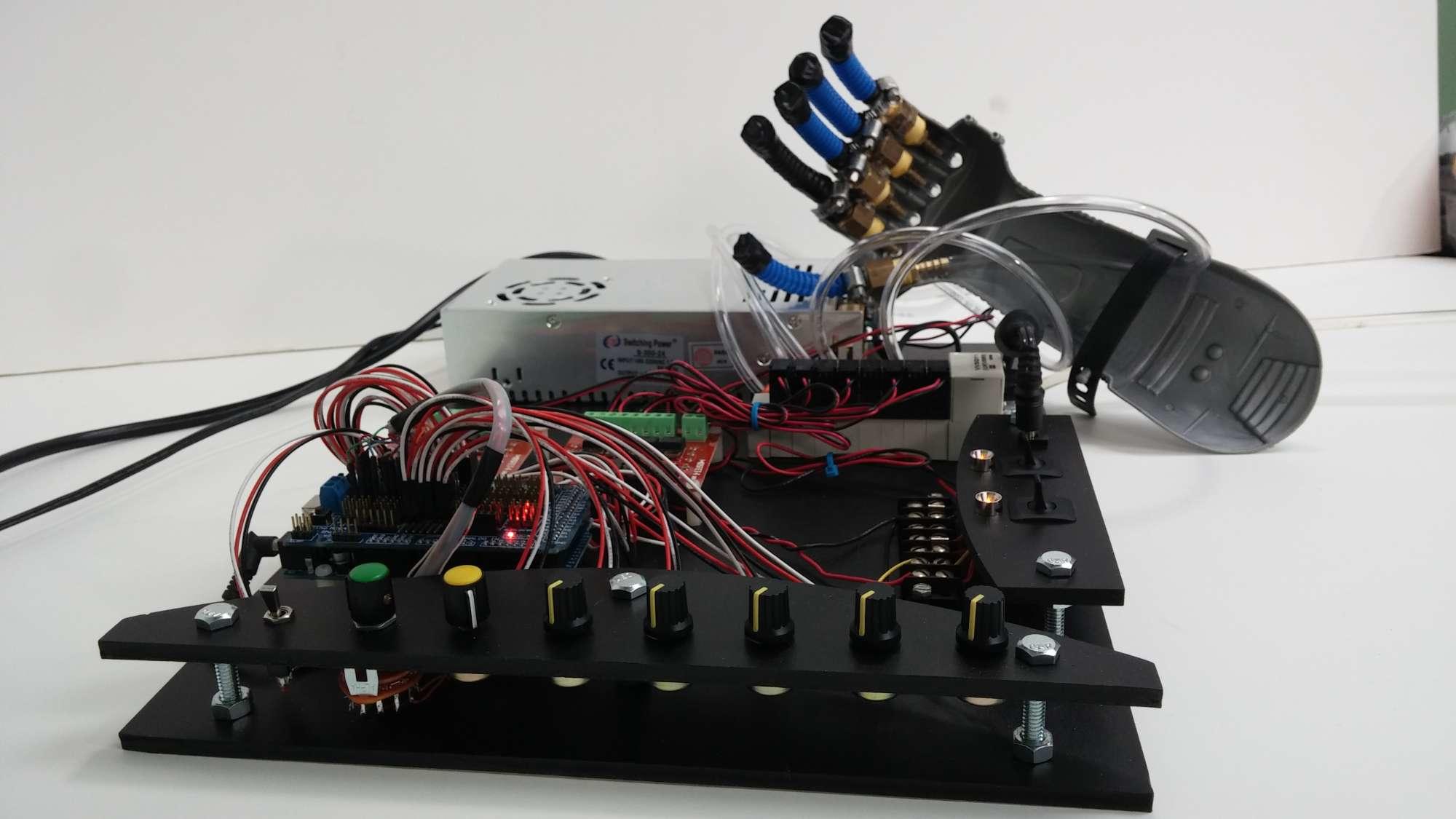
- Cut the Sintra board using a table saw to a size to fit your layout. 12 inches by 16 inches should do. This will be the base of the control board.
- From the remaining Sintra board, cut one piece for mounting the controls (about 12 inches by 2¼ inches). Cut another piece for the power switches and indicators (about 2 inches by 6 inches). Cutting a curve on one side of each of these pieces lets you fit them more compactly on the base, and adds a touch of style.
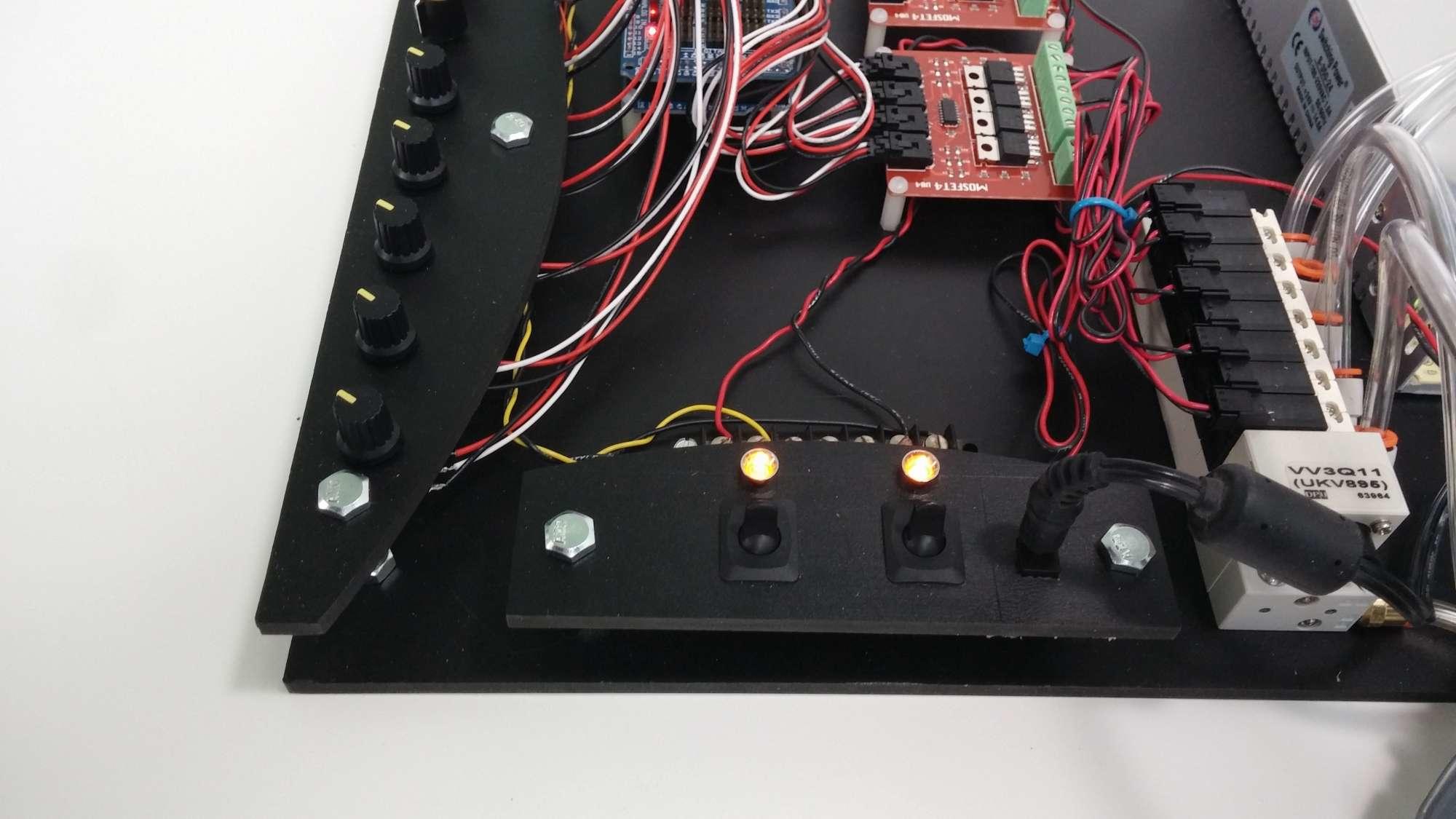
- Use a pencil and a center punch to mark holes on the two mounting boards for the 50-kilohm pots, switches, LEDs, power jack, and for the hex bolts that will mount the boards to the base.
- Drill the holes in the mounting boards. It is possible to tap threads into Sintra board if you want to screw the pots directly into the board, rather than use nuts to hold them. Use one “sacrificial” pot as the tap, if you don’t have the proper size tap to cut the threads (this may damage the pot).
- Use hex bolts and nuts to raise the two mounting boards above the base. Before you install any components in the mounting boards, line them up on top of the base where you want them. Using the holes you drilled for the hex mounting bolts as a guide, mark the base. Then drill 13/64-inch holes in the base and make threads using a 1/4-inch by 20 tap.
- The Arduino Mega and the MOSFET switches should be mounted using M 3-mm x 6-mm Phillips plastic PCB board fasteners. Mark, drill, and tap holes to mount them and the other components. The 24V power supply may be mounted with double-sided foam tape. The air manifold can be mounted with two 10-32-inch bolts or with the foam tape.
- Mount the 24V power supply, air manifold, MOSFET switches, Arduino Mega and Sensor Shield, and 6-gang terminal block to the base. The terminal block may be mounted with small self-tapping screws or with foam tape.
- Mount all the pots, switches, LEDs, and the power jack to the two mounting boards, but don’t mount the boards to the base yet. You have some soldering to do first.
- The schematic shown at the top of this page can also be downloaded so you can refer to it in higher resolution. Refer to the schematic to wire the six pots, the 12-position switch, and the SPDT switch on the control mounting board. Connect the wires as shown to the Arduino Mega Sensor Shield.
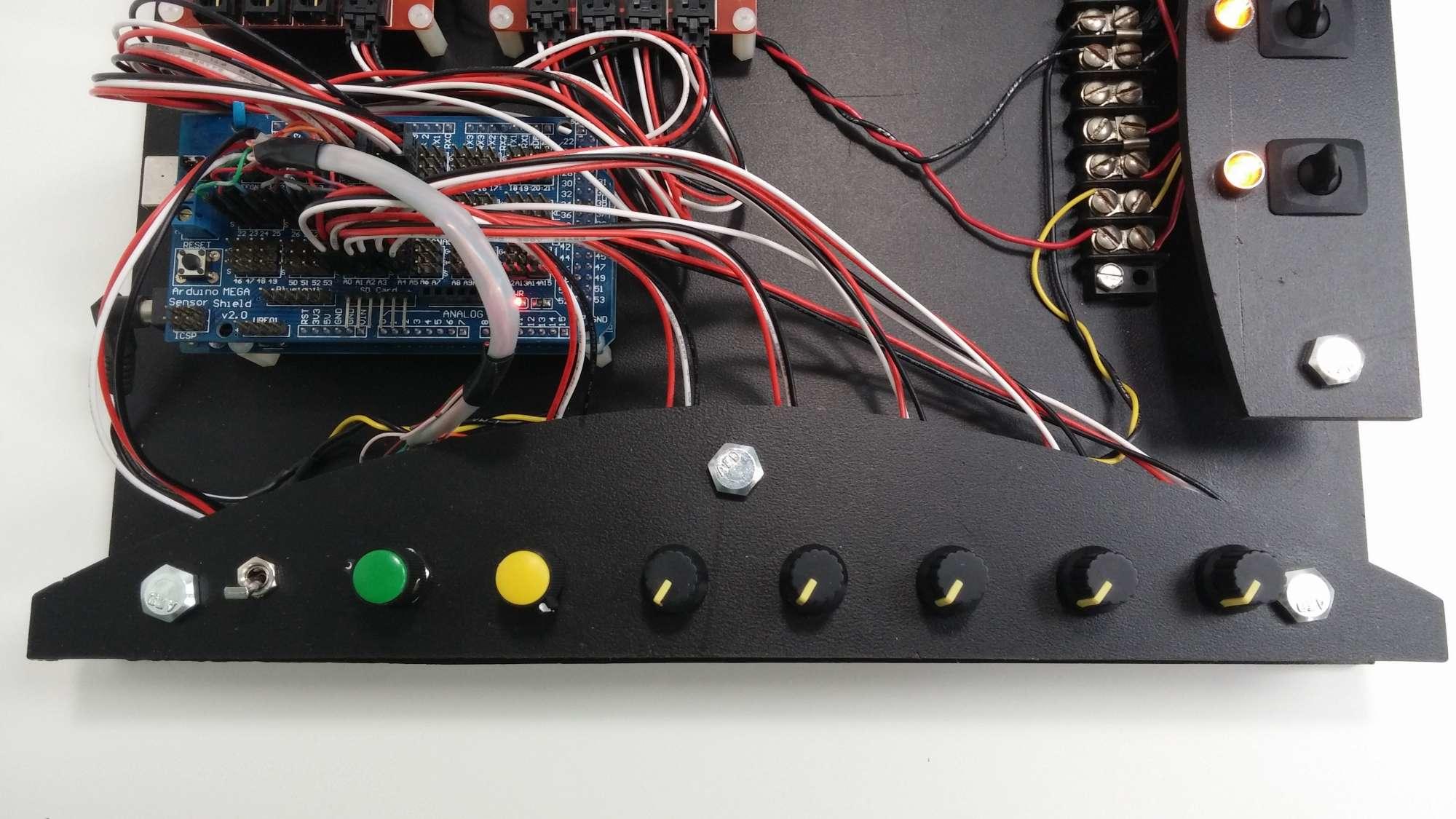
- Follow the included schematic to wire the 12V power jack, power switches, and LEDs for the power mounting board. Connect the wires as shown to the 6-gang terminal block. Wire the 24V power supply as shown, and connect the 12V power jack. Leave the power supplies unplugged from the AC wall socket for now.
- Mount the control and power boards to the base board using 1/4-inch hex bolts and nuts. For each bolt, set one nut flush to the base board and another flush to the mounting board from underneath. This will hold the mounting board firmly.
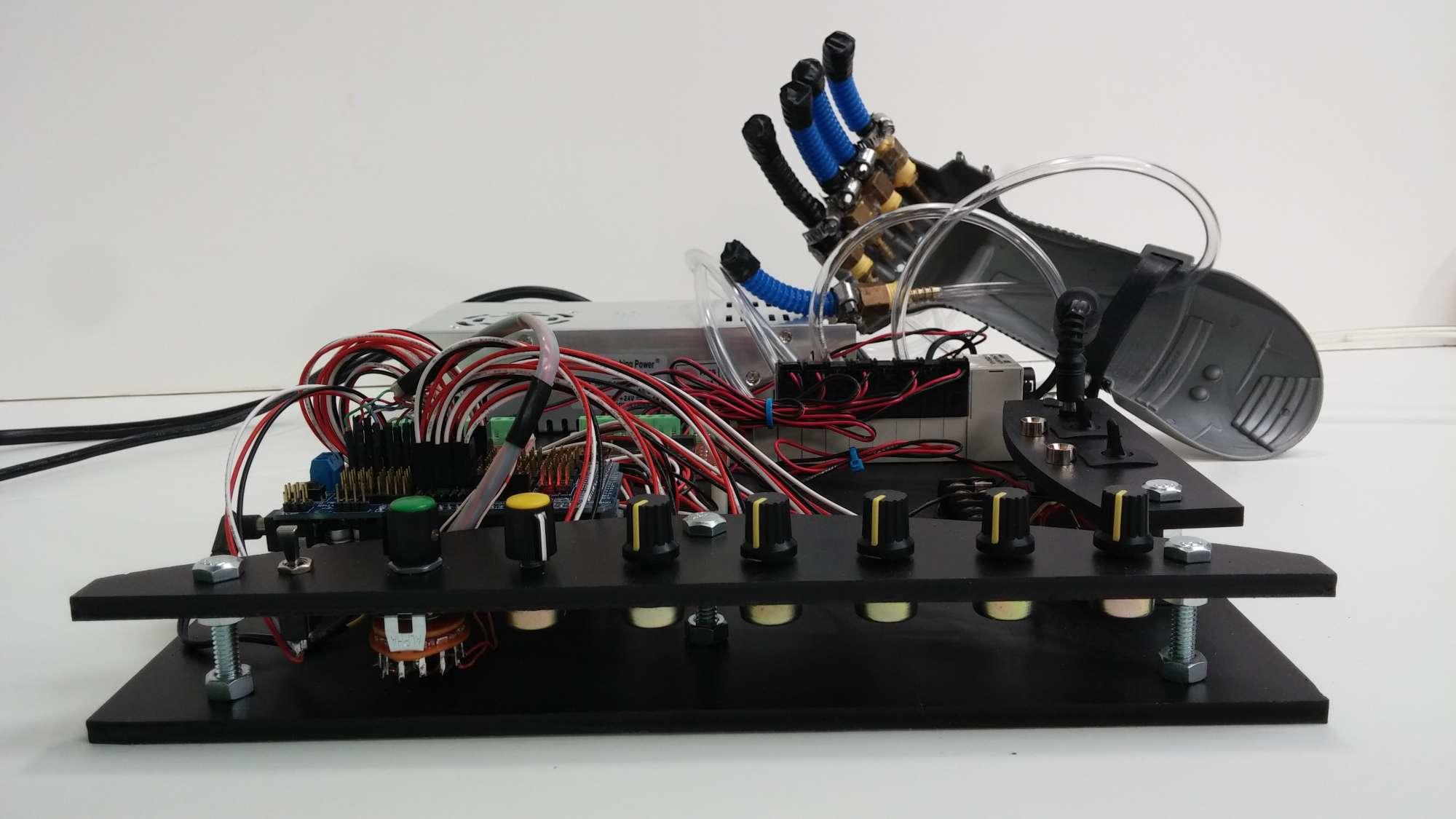
- Run power from the 6-gang terminal block to the Arduino Mega and MOFSET switches. Check the schematic for details.
- Connect the digital out pins of the Arduino Mega Sensor Shield to the input channels of the MOSFET switches as shown in the schematic. Then wire the channel outputs of the MOSFET switches to five of the SMC air valves.
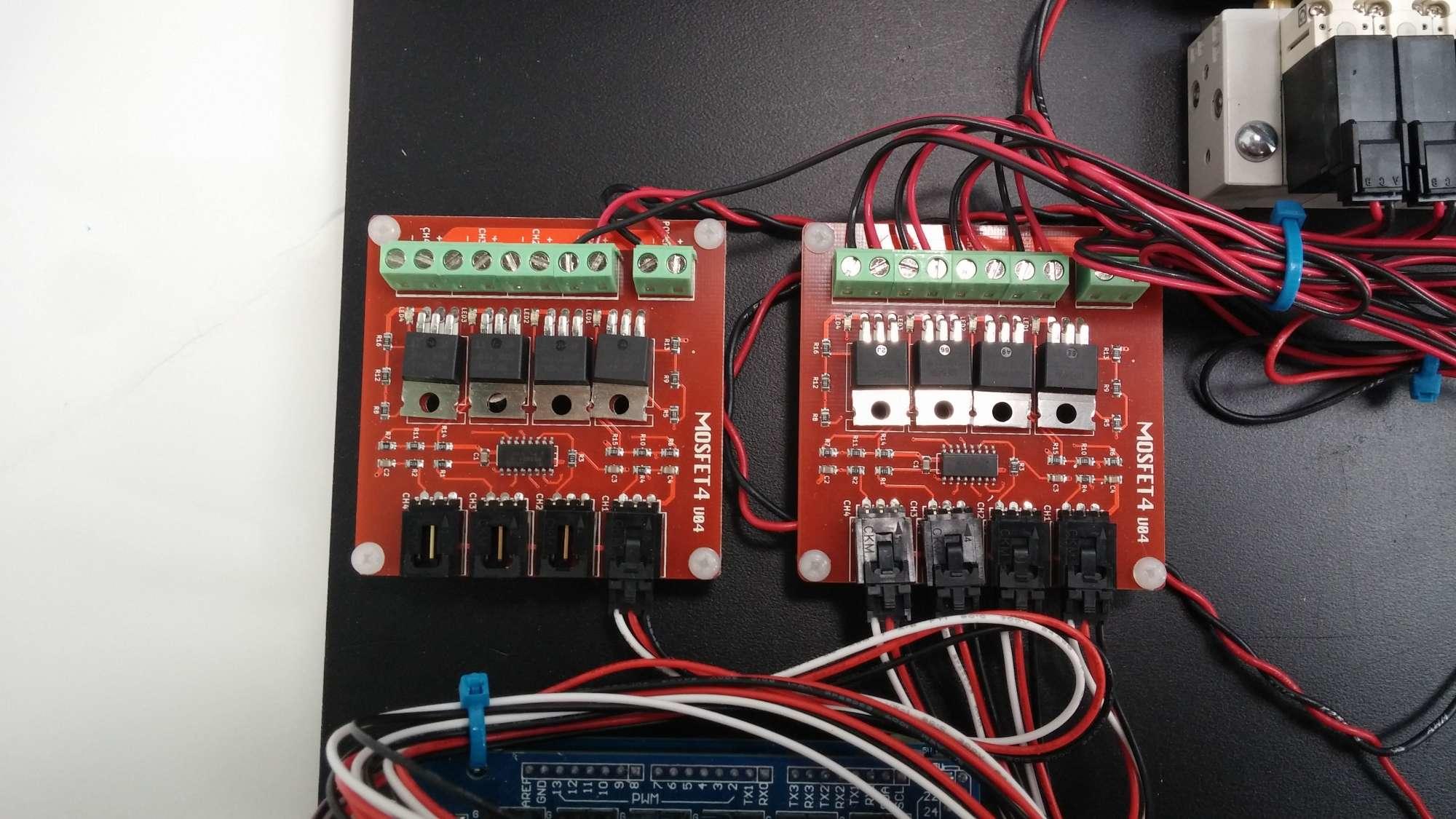
- Connect the 1/4-inch outer diameter vinyl tubing from the five air valves to the robot hand. Connect more 1/4-inch tubing from the input of the air manifold to your air compressor. You should set the output of your compressor to about 20 pounds per square inch. You may need to adjust the pressure from the air compressor to slightly more or slightly less, but this is a good starting point.
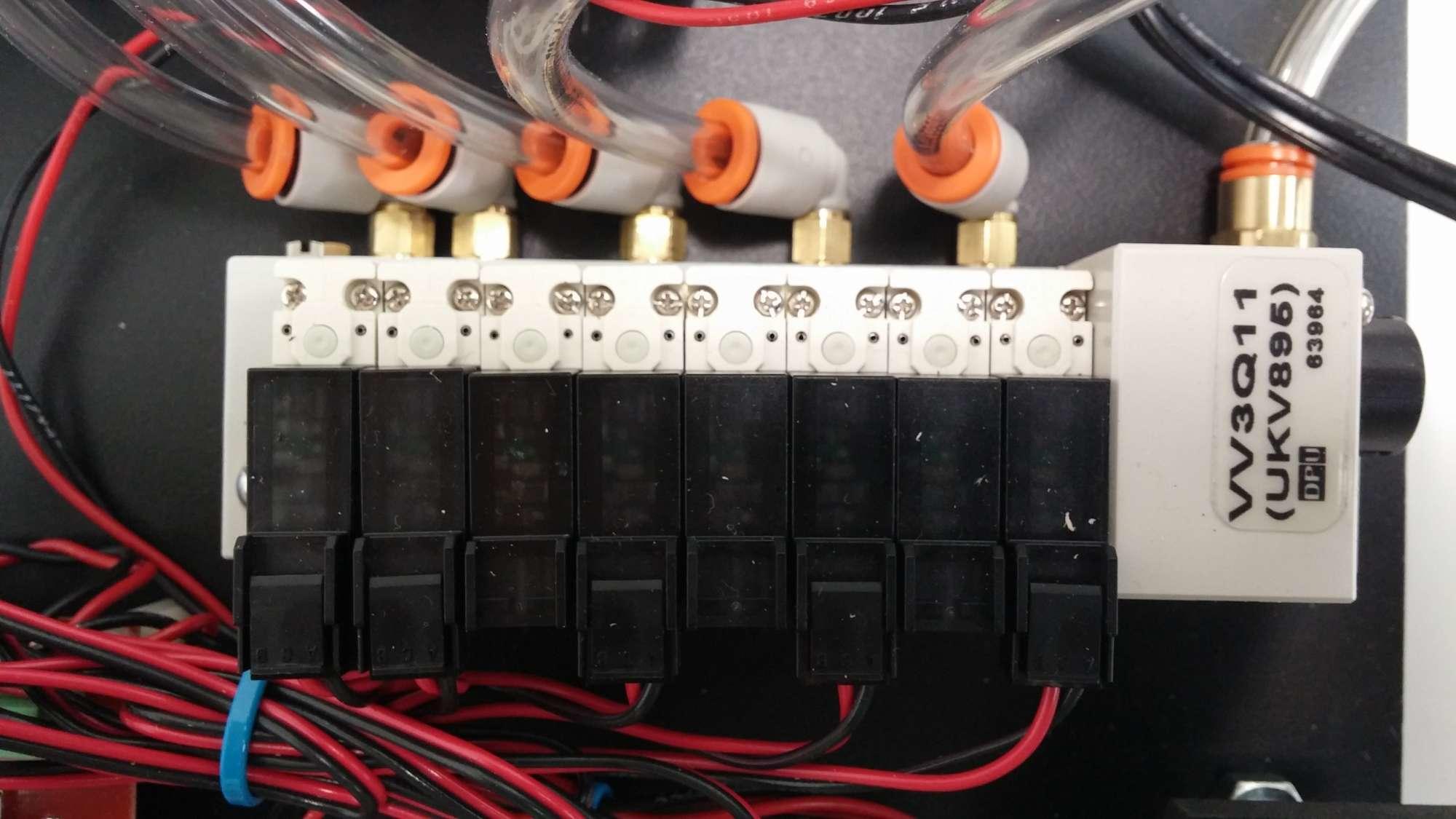
- Plug in the 12V and 24V power supplies. Turn on the 12V supply power switch only (for now).
- Download the the software sketch example in the attached text file. Change the file extension from .txt to .ino. Set up your Arduino programming software, connect to the Arduino Mega, and then compile and download the sketch to the Mega.
- Now turn on the 24V power switch. With the function selector switch in one position, you should be able to control each finger with one of the five pots. Try adjusting the duty-cycle pot to different positions and see how it works. With the function selector switch in the other position, the 12-position switch will control the position or motion of the hand.
